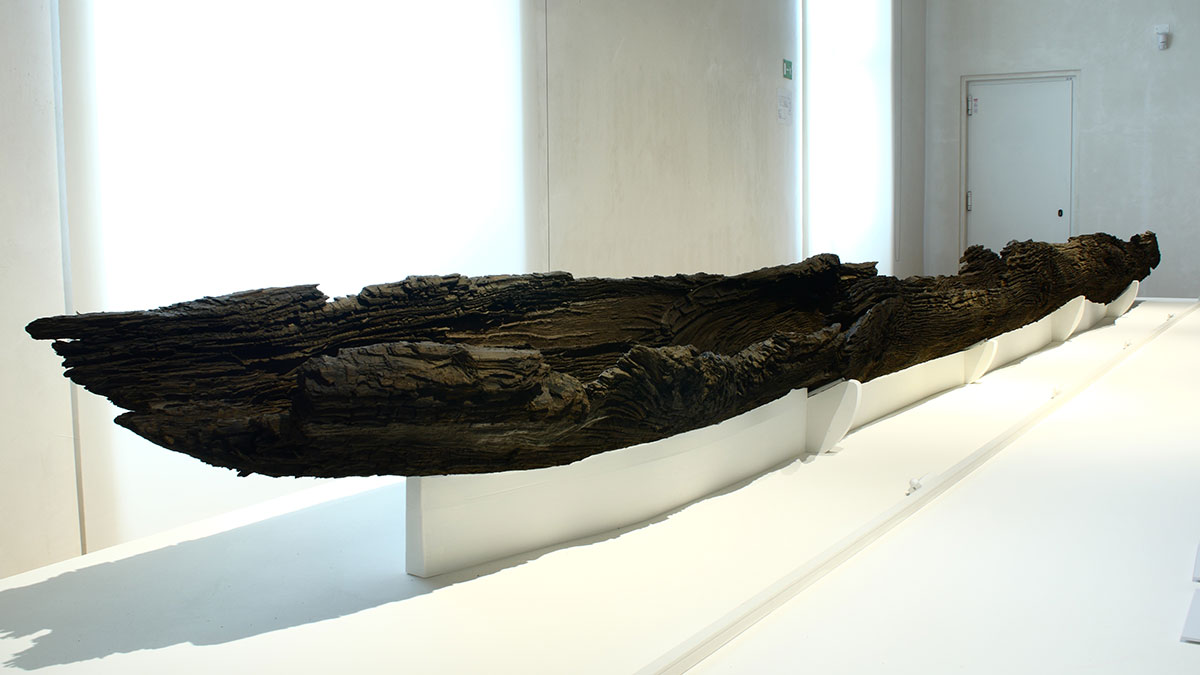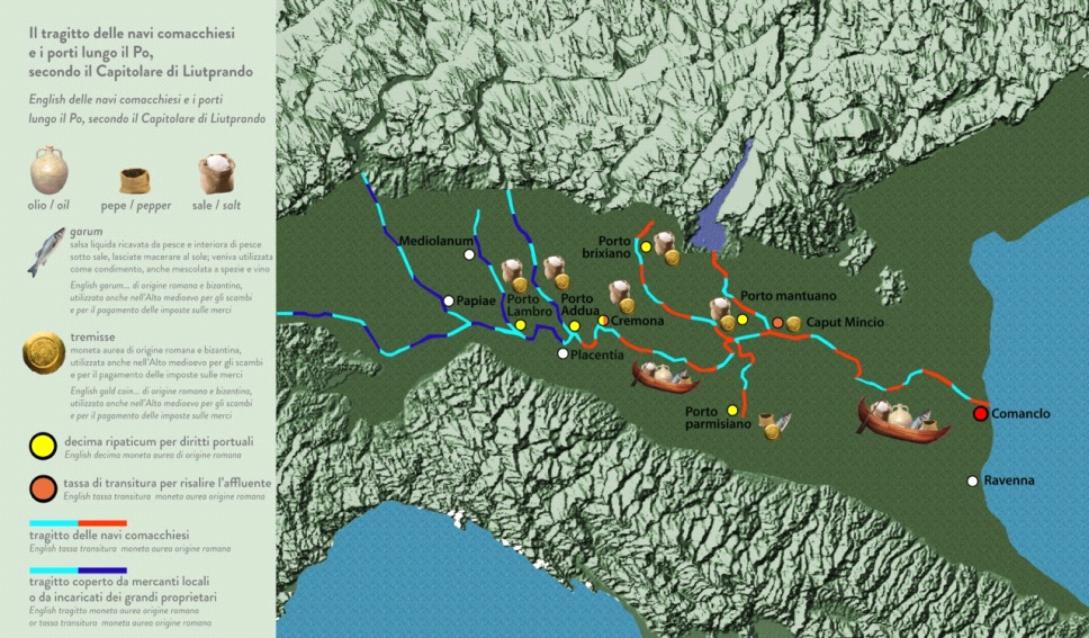A new city: Comacchio
The first mention of Comacchio appears in a document dating back to 715 (or 730). Known as Capitolare di Liutprando, this text established relations between the Lombards and the inhabitants of a new center, Comacchio, that regulated trade along the Po and its tributaries.
The Comacchiesi were allowed to transport their goods to the interior of the capital of the Lombard kingdom, namely Pavia. However, they were required to pay duties and tolls at a series of stations or landing points along the rivers.
This document tells us three key things: first, that in the early 8th century a commercial hub was active at the mouth of the Po, unknown until that time. Second, this town was used to supply locally produced goods (salt), but also Mediterranean imports (spices, possibly oil, and garum, i.e., a fish sauce).
Finally, the town's inhabitants must have already constituted a socially organized community, since it is represented by individuals who bear specific titles, such as presbyter (priest), magister militum, and two comites (count).
Comacchio, the emporium and archeology
Archaeological excavations conducted (from 2006 to 2009) in Piazza XX Settembre and Villaggio San Francesco have helped to rebuild the social and cultural framework of this town between Late Antiquity and the Middle Ages.
The oldest traces of the area of Comacchio's permanent occupancy would date back to the 6th century. The presence of a metal and glass workshop is documented in the 7th century. Near Villaggio San Francesco there are traces of bankside accommodations, landings, and platforms. During the 7th century the village and its ports have been essentially organized, with traces of specialized manufacturing also appearing.
In the first quarter of the 8th century, an inscription recalls the name of Comacchio's first bishop (Vincentius) and that the bishop's palace was founded at the time of Felix, archbishop of Ravenna.
Excavations in Piazza XX Settembre have provided indirect traces of the oldest Episcopal church. It probably had three naves, a mosaic floor, and walls decorated in marble. Fragments of Late Antiquity capitals and columns demonstrate the extensive use of materials taken from nearby Ravenna.
The excavations in the vicinity of Villaggio San Francesco document the abandonment of the area and its infrastructure towards the 10th century, indirectly confirming the emporial crisis facing Comacchio. A reflection of this crisis is even contained in the written documentation. Moreover, beginning in the 10th century, amphorae, the best indicator of Comacchio's turnover, have almost disappeared from the materials excavated.
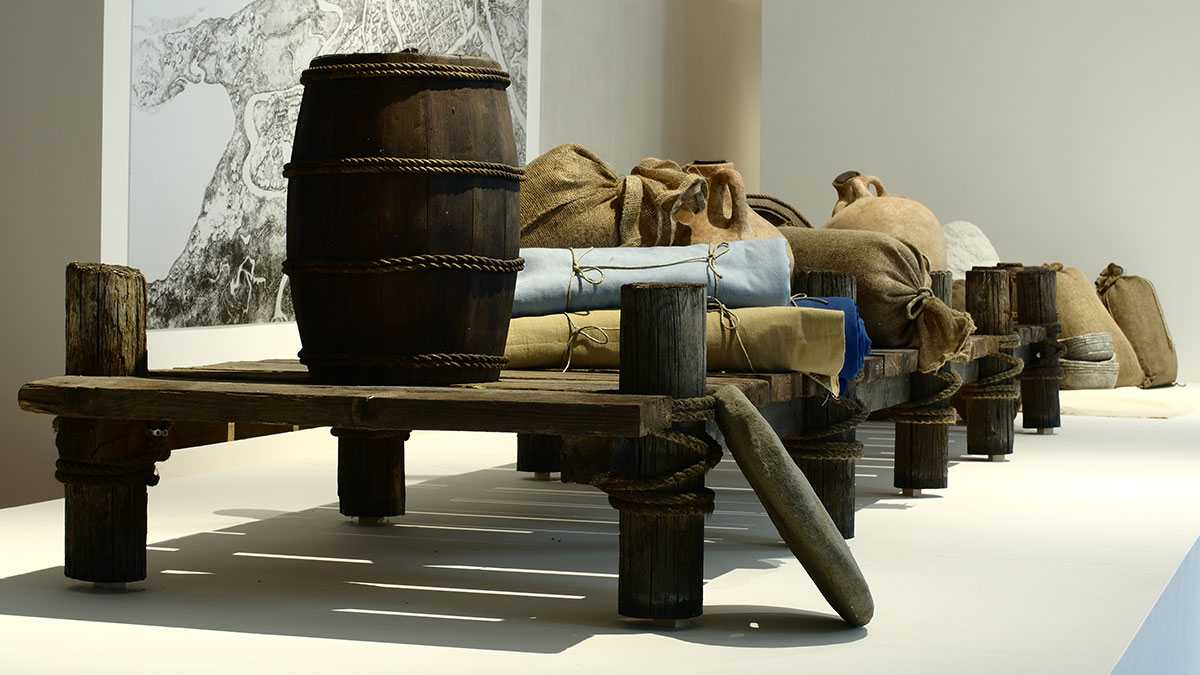
Production materials: ceramics and glass
The Comacchio excavations have yielded much archaeological material. However, the materials found in the early medieval stratigraphies are amphorae, i.e., those containers used to transport goods. Comacchio is currently the centre that has discovered the greatest number of amphorae from 8th-9th century in all of northern Italy.
These amphorae are different from those of the classical world, especially in size (smaller) and in body shape (rounded). Archeometric analyses showed that they came from various places in the Eastern Mediterranean, especially the Aegean and the Black Sea. An analysis of their contents revealed that they transported wine in most cases. However it is not inconceivable that they also carried oil and garum.
Numerous fragments of pottery made with well-fired, purified clays also come from the Comacchio excavations. In almost all cases, they are containers equipped with two handles and having a flat bottom. Archeometric analyses indicate that they are very probably of local origin. We can therefore assume that some of these objects were also amphorae, smaller than the eastern ones and more practical for transporting goods on the rivers and lagoons.
Other ceramic characteristics of early medieval phases are single-fired glazed vessels with appliqué decorations (9th-10th century), which were not very widespread in northern Italy except in areas along the coast and with Byzantine influences.
Many glass objects also come from the Comacchio excavations. Some of these were perhaps produced in the same workshop excavated in Piazza XX Settembre. They consist almost exclusively of goblets and lamps.
Production
One of the most interesting discoveries from the excavations in Piazza XX September is represented by the remains of a workshop datable throughout the 7th century. In this workshop the remains of structures for the production and working of glass (furnace, station for blowing glass containers) and of metal (iron and copper alloy processing) have been found .
The excavation has also yielded such work remnants as crucibles and metal waste (molten drops, filaments) as well as two exceptional and unique matrices.
The first matrix is a stone mould used for making letters, probably in bronze (in this case, an N). This technique was known and applied throughout the classical world and continued though the High Middle Ages (Chapel of Arechi II in Salerno, 8th century; San Vincenzo al Volturno in Molise). However, because of the small-sized inscriptions, the Comacchio matrix is currently unique.
Even more surprising is the bronze matrix used to make cameos in two-colored glass (white and blue). The Comacchio matrix is almost identical to a cameo set in a reliquary, now in the Cividale del Friuli Diocesan Museum. Again in this case, it is a unique example.
The presence of these matrices clearly indicates how this Comacchio workshop was highly specialized not only in the production of ordinary products, like drinking glasses, but also of more sophisticated objects.
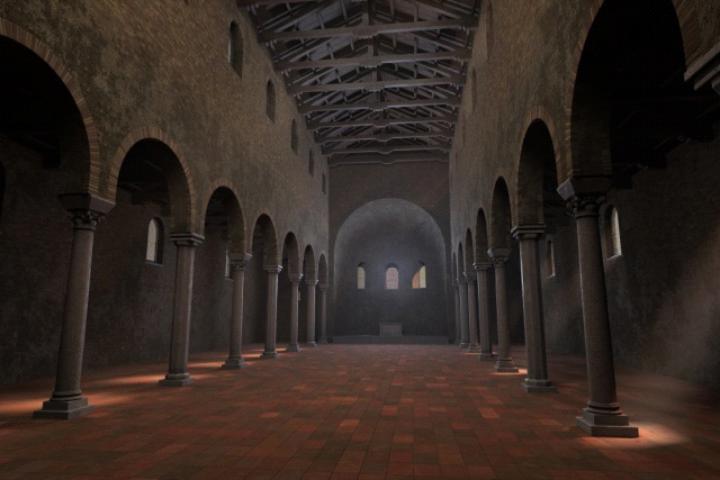
A never-ending daily life
The Piazza XX Settembre excavations have enabled archaeologists to form an idea of everyday life in Comacchio after the medieval period. The area around the cathedral was occupied by a cemetery and many devotional objects, including rosaries, medals, and crucifixes, were found in particular in modern-era burials. Some of these such as the lignite and bone rosary from Santiago de Compostela, are items related to pilgrimages.
In addition, a waste pit tells us much about Comacchio's communities in the 16th century, regarding diet and ceramic household goods.

